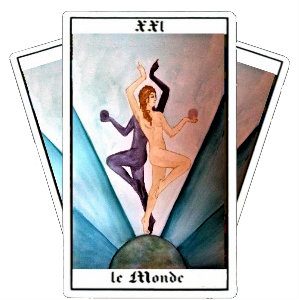…We had passed a point on the moors where my memory had to reach back, back… deep into childhood. I had not walked this part of the high moors for a very long time and I, of course, was the only one of us who knew the way. I was hoping to find the ‘lost’ Backstone circle. I could remember little except that there were hut circles, evidence of ancient settlement and a few carved stones close by, well hidden in the bracken and rushes, and a wall that cuts through the circle itself.
This place has an odd history; it is seldom mentioned on maps and even its status as a genuine stone circle is hotly debated. Opinions vary from it being a complete fake, to a rearrangement by the wall builders, to the remains of a double stone circle. Alignments, however, with other sites on the moor are interesting. The pointed Idol Rock is in clear view to the east where the cairns await. Paul Bennett of The Northern Antiquarian also mentions in his book ‘Circles, Standing Stones and Legendary Rocks of West Yorkshire’ that there is a fallen monolith at Gill Head, south of the site and adds that the Backstone circle, the Twelve Apostles and the Grubstones form an isosceles triangle with the boundary stone known as the Lanshaw Lass set in the centre of the longest side. So while the jury may be out, there is some compelling food for thought.
The circle… as a circle… was ‘lost’ until 1994 when it was discovered by two dowsers who saw some very strange shadows dancing as they rested against the stones. They put it down to imagination until they realised they had shared the experience. Lost it may have been, but I remember being shown the site as my grandfather and I dropped down from the Twelve Apostles one day, decades before its rediscovery. Then I was just told it was an ancient place, part of the landscape built by those who had lived in the huts across the Beck and spoiled by the later wall builders.
We could have missed it very easily though, as the three of us followed the birds. The rushes grow thick here, the bracken is high and the morning was still being born. We usually find that within the circles the vegetation is different, the inner lawn clearer than the surrounding moor. Here it was only vigilance that located the stones amid the lush growth, too thick, too high, to pace out the stones or really get a feel of the space. Even so, it has a strange feel… perhaps it is this that the dowsers picked up when they spoke of imps.
The whole moor is notorious for legends and apparitions; from the Barguest… the great, black dog that haunts the moor with eyes like flaming saucers, to the stories of Giant Rombald and his wife… old gods, mythical creatures, faery and even the strange lights that are the souls of the dead dancing in the cairn fields… It was to capture some of these that I wrote Swords of Destiny, setting it here in this landscape I love with all my heart.
I had told my companions we would go to a stone circle, but the Backstone site was not the one I had in mind. Crossing the stream by a rock carved with an ancient face by modern hands, we turned onto the pavement that runs across the moss fields above Lanshaw towards the Twelve Apostles on Burley Moor.










Reblogged this on Ed;s Site..
LikeLike
Suye could see so much that others would overlook – me among them, probably!
LikeLiked by 1 person
A lovely post, I enjoyed reading about Backstone Circle.
LikeLiked by 1 person
It’s good to revisit memories of Sue.
LikeLiked by 1 person